Books I've Contributed To
I either wrote material for these books, supplied photos, or was interviewed by the authors. All descriptions are from Amazon.com unless otherwise noted. Links are provided for ordering those available on Amazon.
I either wrote material for these books, supplied photos, or was interviewed by the authors. All descriptions are from Amazon.com unless otherwise noted. Links are provided for ordering those available on Amazon.
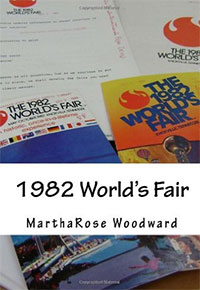
The World’s Fair was held in 1982 for 184 days from May 1, until the wee hours of the morning, Halloween, October 31. It has been called One Big Party. Reports at the time referred to when “The World Came to Knoxville”. It was defined an official international exposition, fully licensed and sanctioned by the Bureau des Expositions Internationales in Paris, France. It was the first fair held in the southeastern United States in 97 years, and it turned out to be the next to last fair held, with the fair held in New Orleans in 1984 being the last one.
I contributed a photograph of the park built on the former Fair site.
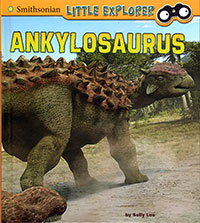
Explore the world of the Ankylosaurus, a plant loving dinosaur that walked this planet over 65 million years ago! From its club tail to its armored body, find out what made this ancient lizard thrive in the Cretaceous Period.
I contributed a photo of the ankylosarus at the 1964-65 New York World's Fair.

101 great games to play on your home computer, by yourself or with others. Each complete with programming and sample run. - Cover text
This book collected computer games written by me and other authors for "Creative Computing" magazine. The source code for each game was included so readers could input the games into their own computers.
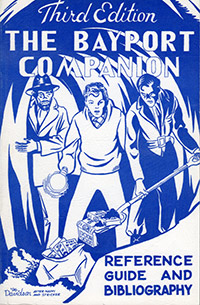
The first definitive bibliography of the Hardy Boys Mystery Series by Franklin W. Dixon (Stratemeyer house name). - AbeBooks
I contributed data and comments for this guide to the Hardy Boys book series.
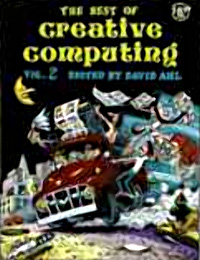
Volume 2 covers computer kits, the microprocessor, and home applications, and is the beginning of the merging of school and home applications.
This book collected computer games written by me and other authors for "Creative Computing" magazine. The source code for each game was included so readers could input the games into their own computers. This edition included the games Chase, Deep Space, LEM, and Road Race. Download the articles for a look at some vintage programming.
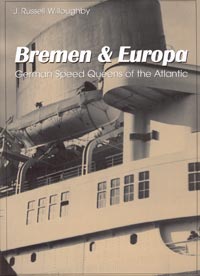
The story of the North German Lloyd express liners, Bremen and Europa, symbols of resilience in post-World War One Germany, comes to life in this meticulously researched and lavishly illustrated volume from J. Russell Willoughby. From concept, construction and maiden voyages, to their role in World War Two and Europa’s second life as French Lines’ Liberté, the entire story of Bremen and Europa is documented. Included are three chapters devoted entirely to their unpretentious interiors, as well as a chapter of memorabilia pertaining to the two liners.
Fans of the great trans-Atlantic steamers will want to check out this book on two classic German passenger liners. I contributed four pictures of the Europa while she was sailing as the Liberte. The book is available online.
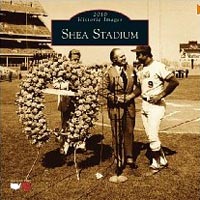
The photographs in this calendar were selected from Images of Baseball: Shea Stadium.
Another in the Arcadia calendar series. I contributed the photo for April 2010.
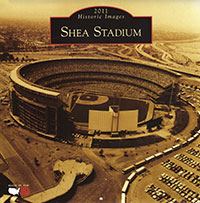
The photographs in this calendar were selected from Images of Baseball: Shea Stadium.
Another in the Arcadia calendar series. I contributed the photo for June 2011.

When Claire loses her favorite bear, Benny, at the World’s Fair, she finds what truly matters. Throughout the vibrant, artful, and heartwarming comic book story, readers will find facts about the 1964-65 New York World’s Fair.
This is a really cute children's book set at the 1964-1965 New York World's Fair. I love the story and the artwork. I contributed photos for reference and for a collage of images.
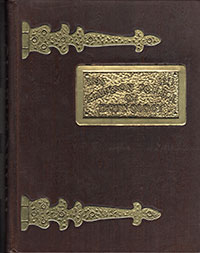
This is the 1972 yearbook from my college, Clarkson College of Technology (now Clarkson University.) I was part of the photo staff. I think my assignment taking pictures of the math department professors made me realize I did not want to pursue a career in portrait photography. But wow, the pictures of the Chess Club sure made up for it!
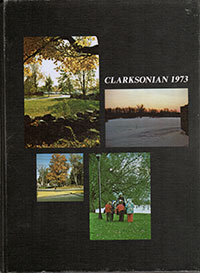
This is the edition from my senior year. More pictures of professors but they also let me sneak a few candid shots from around campus in that year. I enjoyed working on the yearbooks. We did our own developing and I learned a lot about darkroom work.
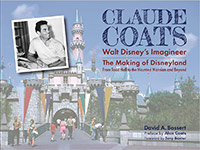
Claude Coats: Walt Disney’s Imagineer—The Making of Disneyland: From Toad Hall to the Haunted Mansion and Beyond is the story of artist and designer Claude Coats who, for more than half a century, was one of the most prolific creative talents at The Walt Disney Company and, arguably, the most accomplished. An unpretentious man of strapping stature, Claude was the artist behind some of the stunning backgrounds produced at the Disney studio during the Golden Age of animation before becoming one of the founding members, handed-picked by Walt Disney, to start the fabled WED Enterprises—now known as Walt Disney Imagineering. Working side by side with Walt Disney, Claude Coats is considered a significant influence in creating the first theme park, Disneyland, and a new form of creativity called Imagineering. He forever changed the worlds of global entertainment, technology, architecture, and popular culture.
I contributed several photos from the 1964-1965 New York World's Fair.
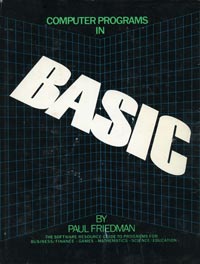
This book cataloged computer games written by me and other authors. It included brief reviews of each game and information on where it was originally published.
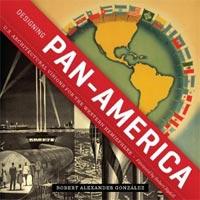
Designing Pan-America presents the first examination of the architectural expressions of Pan-Americanism. Concentrating on U.S. architects and their clients, Robert Alexander González demonstrates how they proposed designs reflecting U.S. presumptions and projections about the relationship between the United States and Latin America. This forgotten chapter of American architecture unfolds over the course of a number of international expositions, ranging from the North, Central, and South American Exposition of 1885-1886 in New Orleans to Miami's unrealized Interama fair and San Antonio's HemisFair '68 and encompassing the Pan American Union headquarters building in Washington, D.C. and the creation of the Columbus Memorial Lighthouse in the Dominican Republic.
I supplied a picture of the 1939-1940 New York World's Fair.
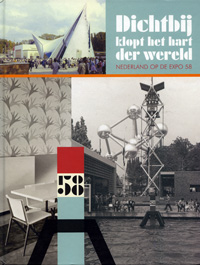
This history of Expo 58 was released in the Netherlands and thus is written in Dutch. Here's a translation of one description:
Fifty years ago housed the Brussels Expo'58, the first post-war world exhibition. Despite the cold war organizers have tried to be as optimistic picture of the can in the field of contemporary art, science, art and culture This image was deliberately chosen to contribute to a better and more humane world. The optimistic modernism was reflected in the architecture of many pavilions. The Dutch pavilion with the theme "water" was at the end as number six on the list of most visited sections. This book gives special attention to this Dutch contribution to the Expo.
I contributed photos of Expo 58. The book sure makes me wish I could read Dutch.
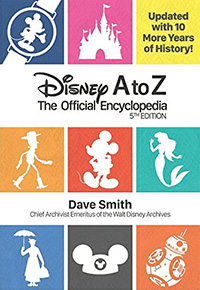
With the public's never-ending interest in Walt Disney the man, the company, and the phenomenon, there is no lack of published materials on the subject. This official Disney Archives publication, however, is unique in its treatment of multiple aspects of the Disney empire. Compiled to help archivists answer telephone questions, the articles are generally brief but offer significant technical information like release and opening dates for films and lists of cartoons in series. Walt Disney, Mickey Mouse, and recent company films merit longer discussions. Entries are arranged alphabetically and cover the company's TV and movie releases; key company personnel; an abundance of information on parks, resorts, and attractions; and even stores and parades. Biographies provide titles and dates of Disney productions or dates of employment but no personal information. Smith, founder of the Disney Archives and coauthor of The Ultimate Disney Trivia Book (Hyperion, 1993), has crafted a trivia-seekers' treasure. For most public and academic collections in the performing arts.
I'm pleased to have worked with long-time friend Dave Smith on some of the television entries for his great collection of all things Disney.

Steve Vagnini did a masterful job updating Dave Smith's original work for this massive 1,010-page book released as part of the Disney 100 celebrations. I am honored to be included in the list of contributors, having written many of the entries for television series.
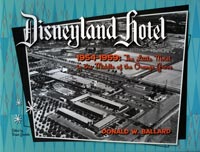
Since the book "Disneyland Hotel, the Early Years 1954-1988" was published in July of 2005, we have received an enormous amount of new information, photographs, documents, testimonials, brochures and other items detailing the rich history of the fabulous Disneyland Hotel. These new materials (which includes an amazing vault find with extremely rare and some not ever seen by the public photographs and films) will help better document the history of this landmark facility and fill in many of the gaps, dates and information regarding the Disneyland Hotel. This edition is devoted to the years 1954 to 1959 from the details surrounding the initial talks with Walt & Roy Disney and Jack Wrather to the many additions and expansions to the building of the Disneyland Hotel in its pre-Tower configuration. Filled with over 300 photographs and beautifully designed with 50's period graphics and design.
I contributed five photos to this nice look back at the building of the Disneyland Hotel.
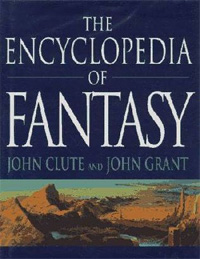
This masterful follow-up to the 1993 Encyclopedia of Science Fiction is an essential purchase for anyone who's serious about fantasy. Those who are serious about horror will also find it an excellent reference. The works of prolific and confusing authors such as Michael Moorcock, as well as authors such as J. R. R. Tolkien who have many posthumously published fragments, are explained with admirable clarity. Especially fascinating are the numerous terms for motifs and themes, constituting what the editors call a map of the many "fuzzy sets" in the universe of fantasy fiction--terms such as "crosshatch," "polder," and "water margin." There are many entries on horror movies and the better-known horror writers (only writers who write no fantasy, such as Richard Laymon, are excluded). You'll also find carefully written definitions of horror, dark fantasy, supernatural fiction, gothic fiction, psychological thrillers, and weird fiction. Locus calls The Encyclopedia of Fantasy "massive and welcome," and writes, "This will be the standard reference for years to come."
I was first approached to write the entries for several Disney television entries but later did just about all of the entries for American and some British television series. Researching some of the more obscure series was certainly a lot harder then in the pre-Google era than it would be today!
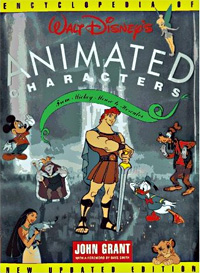
From Mickey Mouse to Timon, Roger Rabbit to Hades, and Aladdin to Sebastian--the famous, the infamous, and the obscure--every character of the Disney honor roll is present and accounted for in this comprehensive volume that every true Disney fan and animation enthusiast will treasure.
Following my work with John on his Encyclopedia of Fantasy, he asked if I would help update his book on the Disney animated characters. I revised and added to the entries for many of the television characters.
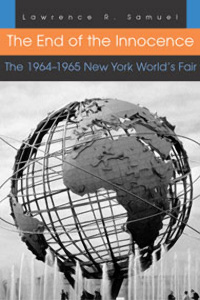
From April to October in 1964 and 1965, some 52 million people from around the world flocked to the New York World's Fair, an experience that lives on in the memory of many individuals and in America's collective consciousness. Lawrence R. Samuel offers a thought-provoking portrait of this seminal event and of the cultural climate that surrounded it, countering critics' assessment of the Fair as the "ugly duckling" of global expositions. Although much attention has been paid to the controversial role of Fair president Robert Moses, who tried to use the event to ensure his personal legacy, the Fair itself was for the great majority of visitors an overwhelmingly positive, often inspirational, and sometimes transcendent experience that truly delivered on its theme of "peace through understanding." Much of the Fair's popularity, Samuel suggests, stemmed from its looking backward as much as forward, offering visitors sanctuary from the cultural storm that was rapidly approaching in the mid-1960s. Opening just five months after President Kennedy's assassination, the Fair allowed millions to celebrate international brotherhood while the conflict in Vietnam came to a boil. The Fair glorified the postwar American dream of limitless optimism just as a counterculture of sex, drugs, and rock 'n' roll was coming into being. It was, in short, the last gasp of the American Dream: The End of the Innocence.
I contributed all of the photographs used in this extensive look at the Fair.
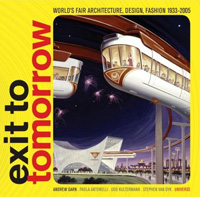
Focusing on the golden era of world's fairs, from the 1930s to the 1970s, this book offers a nostalgic glimpse of the future in vintage photographs, postcards, previously unpublished memorabilia, and drawings of pavilions, created by such designers and architects as Buckminster Fuller, Norman Bel Geddes, Kisho Kurokawa, and Le Corbusier. Innovative, informative, and entertaining, this souvenir of yesterday's tomorrow is a superb tour of the achievements of avant-garde architecture and design.
I contributed a photograph of the United States Science Center from the 1962 World's Fair.

This Japanese language book features 100 essays on different world's fairs and expos.
I contributed five photographs from the 1964-1965 New York World's Fair. Sadly I can't read Japanese so I can't comment on the rest of the book but at 417 pages it seems quite detailed.
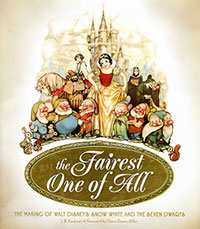
Walt Disney’s Snow White and the Seven Dwarfs was first shown to a theatrical audience in December 1937 and brought overwhelming, joyous applause from a house full of hardened film-industry professionals. In subsequent months it would open around the world, happily acclaimed by audiences and critics everywhere as one of the best films of the year, if not the decade.
From today’s perspective, its stature is even greater—named as one of the best movies of all time by the American Film Institute, and still beloved by children and adults around the world, Snow White can be seen as the flowering of an all-too-brief Golden Age of animation as well as a fascinating document of its time.
Such a level of artistic achievement doesn’t happen by accident. Walt Disney and a staff of exceptionally talented artists labored over Snow White for four years, endlessly working and reworking their scenes to achieve an ever higher standard. The result, as we know, was magnificent and game-changing for the Disney Studios and, indeed, for the art of animation itself.
This book is the first to reconstruct that process in exacting detail, with the loving attention it deserves from an internationally noted film scholar. Author J.B. Kaufman spent years researching the film’s history, interviewing participants, and studying the marvelous archival art that appears in these pages. The result is a work that can be appreciated equally as a piece of film history and as a collectible art book, a joy for anyone who loves film, animation, and the magical world that Walt Disney created.
I contributed video tapes and other reference material.
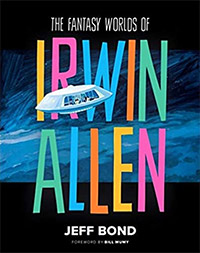
More than 2 1/2 years in the making, this lavish, 600+ page hardcover coffee table book is the first and only book of its kind to take a visual journey through the mind and career of legendary producer Irwin Allen, the “Master of Disaster”—the man behind some of the most popular television programs of the 1960s and the visionary who invented the special effects movie blockbuster format with his 1970s hits The Poseidon Adventure and The Towering Inferno. THE FANTASY WORLDS OF IRWIN ALLEN follows Allen from his early days as a Hollywood agent and radio personality to his lengthy stint at 20th Century Fox, where he produced movies such as The Lost World and Five Weeks in a Balloon and the popular television shows Voyage to the Bottom of the Sea, Lost in Space, The Time Tunnel and Land of the Giants. Illustrated with more than 2000 images including concept and production artwork, storyboards, blueprints, design sketches, miniatures and behind-the-scenes photographs, many of them never before published, THE FANTASY WORLDS OF IRWIN ALLEN is the ultimate guide to Allen’s famous productions, from his documentaries The Sea Around Us and The Animal World to his spectacular TV-movie City Beneath the Sea, plus fascinating unproduced projects, all explored in detail for the first time. Limited to 1000 copies, this stunning hardcover clocks in at 598 pages. It measures approximately 12″ by 10″ and weighs in at roughly 7½ pounds.
Being a big fan of Irwin Allen's work it was a thrill to contribute to this one. Jeff used some of the old pieces I wrote about Allen's shows for reference, and I received a nice credit for "help and suggestions for the manuscript".
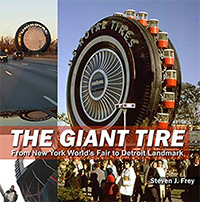
Originally built as a Ferris wheel for the 1964-65 New York World's Fair, the Uniroyal Giant Tire sits adjacent to I-94 in Allen Park, Mich., and welcomes over 100,000 motorists to the Motor City every day. Much of this beloved landmark's history has been lost over time. With interviews from those that were there in the beginning, newly uncovered information, and never before seen photographs, historian Steven J. Frey separates truth from legend, and literally gives us an inside look at the life of America's most iconic roadside landmark and the most successful single marketing object ever made.
I contributed a number of photos and other material.
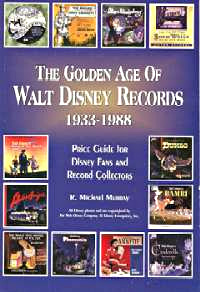
This softbound 256 page book is a handy 6 x 9" making it convenient to take with you as you antique. It contains more than 250 full color, sharp photos of album covers and recordings. This is the first comprehensive price guide and discography covering the complete output of Disney recorded music on both Disney and other labels. It covers the years 1933 to 1988 and is very complete. There is a useful table of contents and index making it easy to locate items. A history and condition guide is provided. Topics range from LPs, 45's, 78's to Little Golden Records.
I have a large collection of Disney records and catalogs, and provided information and fact checking assistance.
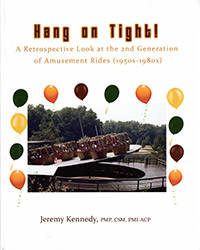
Crafted from the 35 + year collection of industry aficionado Jeremy Kennedy, comes one of the most fascinating publications to ever spotlight Amusement Ride’s second golden age. Coasters, kiddies, verticals, wheels, transports, splashers, flats, virtual rides, and even skyscrapers are all celebrated in this magnificent retrospective of press releases, theme park public relations materials, travel brochures, and ride manufacturer promotional profiles. From the popular to the peculiar, Hang on Tight! leaves no story untold.
I contributed a photo of the AMF Monorail at the 1964-65 New York World's Fair.
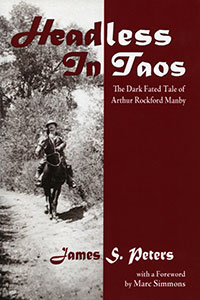
Following the discovery of the decapitated corpse of Arthur Rochford Manby in his nineteen-room mansion in Taos, New Mexico, there quickly arose two schools of thought as to the event. One sect accepted that he was gruesomely murdered, while the second held to the belief that he had staged his death and left behind the cadaver of a stranger. The case was a bizarre enigma wrapped in riddles, confusion, betrayal and greed. Finally for posterity, and as relief to the guilty, it was labeled an unsolved crime. Today it is referred to as the ''Manby Mystery of Taos.'' This book contains very little mystery. Rather, it is the tragic account of Manby and his 35-year career in manipulation, extortion, high-grading and murder. Arriving in New Mexico from England in 1883, the 24-year-old Manby began his personal odyssey for El Dorado: the dream of building a vast empire in the Southwest. He finally does so in 1913 when becoming the owner of the 61,000 acre Martinez Grant of Taos. But after three years it slips from his grasp and he is left nearly penniless. In his last years he gradually decays mentality and emotionally. Looked upon as an eccentric, no one realizes how ill he has become. Finally having a falling out with a quartet of compatriots, in July, 1929, he is murdered and decapitated.
I contributed three photos I took of the Mystic Mine in New Mexico way back in 1967. It's a good thing I never throw anything away!
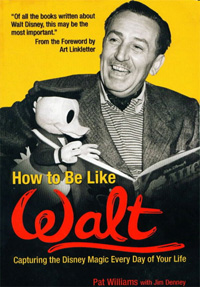
An inspiring biography of one of the most influential and beloved figures of the 21st century, based on more than a thousand interviews.
How to Be Like is a "character biography" series: biographies that also draw out important lessons from the life of their subjects. In this new book—by far the most exhaustive in the series—Pat Williams tackles one of the most influential people in recent history.
While many recent biographies of Walt Disney have reveled in the negative, this book takes an honest but positive look at the man behind the myth. For the first time, the book pulls together all the various strands of Disney’s life into one straightforward, easy-to-read tale of imagination, perseverance, and optimism. Far from a preachy or oppressive tome, this book scrapes away the minutiae to capture the true magic of a brilliant maverick.
I was interviewed about my experiences putting together my book on Disney television and asked for input on Walt's creative and leadership processes based on his papers and interviews of those who had worked with him.
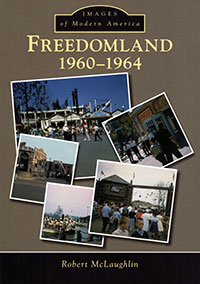
Freedomland opened on June 19, 1960, in the Baychester section of the Bronx, New York. Designed by Marco Engineering of Los Angeles for International Recreation Corporation, it was the third and largest innovative theme park built across America to mimic Disneyland. Constructed in the shape of the United States and presenting 200 years of American history, Freedomland was intended to be both exciting and educational. Historically themed attractions and costumed cast members were located throughout the seven sections. In addition, Freedomland offered national and local stars, big bands, and daily entertainment events. Professional character actors also worked throughout the park. Through photographs, Freedomland: 1960-1964 takes a tour of all seven sections of Freedomland and more. Although it was open for just five seasons, the parks guests and cast members were fortunate to have their very own Disneyland of the East.
I loved Freedomland and was glad to contribute nine photos to this book.
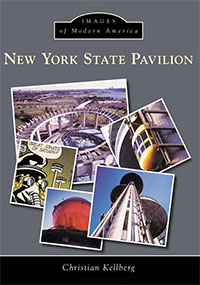
The New York State Pavilion is a legacy of the 19641965 New York Worlds Fair. It is located in the southwest corner of Flushing Meadow Corona Park, where the Long Island Expressway crosses over the Grand Central Parkway. From these freeways alone, the pavilion is seen by hundreds of thousands of motorists per day and is a symbol of the Empire State, the Eiffel Tower of Queens. From the observation towers that offer spectacular views of Queens and beyond; to the expansive Tent of Tomorrow, which showcased the worlds largest map (of New York State); to the stunning Queens Theatre in the Park, New York State Pavilion is an insightful look at this iconic landmark, with many spectacular historic color photographs, published here for the first time.
I contributed several photographs and editorial assistance.

In 1958, Swiss-French architect and urban planner Le Corbusier designed the Philips Pavilion for the World's Fair in Brussels. It is the only building the artist produced for a Dutch client. The unconventional pavilion was the setting for the experimental performance "Le Poème électronique," by avant-garde composer Edgard Varèse, seen by one and a half million visitors. Combining film, color, music and light, this event is regarded as the first multimedia performance for the general public. After its demolition in 1959, the pavilion became an icon of 20th-century art. The Rijksmuseum in Amsterdam hosts a scale model of the pavilion and also provides the eight-minute soundtrack of "Le Poème électronique." EYE Filmmuseum, also in Amsterdam, has kept the film footage of the performance. This monograph includes a complete overview of the Philips Pavilion, including its history, construction and detailed documentation of "Le Poème électronique."
I contributed photos of the pavilion.
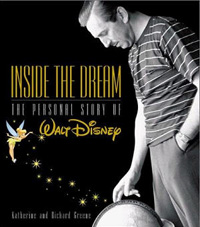
This timely biography, told through the captivating and vivid words of those who knew, worked with, and studied Walt Disney, provides the most revelatory portrait to date of the man who has become an icon of North American culture. More than 70 men and women were interviewed, including friends, employees, and historians, adversaries and rivals, and, most especially, family members, who add a special private context to a very public work. This fascinating book is the ideal compliment to the upcoming ABC Television documentary Walt: The Man Behind the Myth.
As the description notes, this book was based on interviews conducted for the documentary. Excerpts from the interviews are used here with photographs from the Disney family and the Disney Archives. There are several quotes from me about the television series and films.
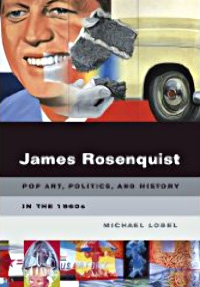
James Rosenquist's paintings, with their billboard-sized images of commercial subjects, are utterly emblematic of 1960s Pop Art. Their provocative imagery also touches on some of the major political and historical events of that turbulent decade--from the Kennedy assassination to the war in Vietnam. In the first full-length scholarly examination of Rosenquist's art from that period, Michael Lobel weaves together close visual analysis, a wealth of archival research, and a consideration of the social and historical contexts in which these paintings were produced to offer bold new readings of a body of work that helped redefine art in the 1960s. Bringing together a range of approaches, James Rosenquist provides a compelling perspective on the artist and on the burgeoning consumer culture of postwar America.
I provided research and photos for the chapter on Rosenquist's work at the 1964-1965 New York World's Fair.
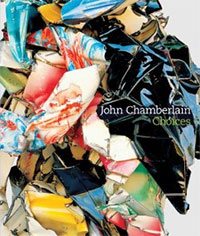
John Chamberlain rose to prominence in the late 1950s with energetic, vibrant sculptures hewn from disused car parts, achieving a three-dimensional form of Abstract Expressionism that astounded critics and captured the imaginations of fellow artists. For a seven-year period in the mid-1960s, the artist abandoned automotive metal and turned to other materials. Motivated by scientific curiosity, Chamberlain produced sculptures in unorthodox media, such as urethene foam, galvanized steel, paper bags, mineral-coated Plexiglas and aluminum foil.
I contributed a photo of an untitled work by Chamberlain that was part of the New York State Pavilion Theaterama art exhibit at the 1964-1965 New York World's Fair.
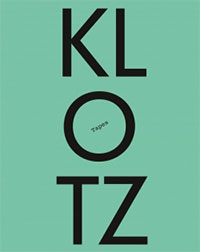
This volume marks the first publication of the audio recordings kept by the German art historian Heinrich Klotz. These journal-like records chronicle the eventful years before and after the founding of the Deutsches Architekurmuseum in Frankfurt in 1984, where Klotz served as the first director, and which is celebrating its thirtieth anniversary this summer. Klotz’s trenchant and idiosyncratic depictions of the major events and figures of European and American architecture in the late 1970s and early 1980s have an almost "behind the scenes" feel to them. In singular fashion, these records illuminate the evolution of the postmodern movement in architecture. ...
I contributed a photo of the Wonderwall from the 1984 New Orleans World's Fair.
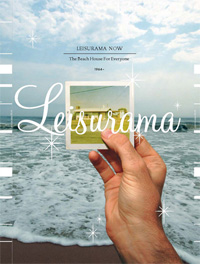
In 2001, when graphic designer Paul Sahre rented a summer home in Montauk, his retreat turned out to be a relic: it was one of only 200 or so cookie-cutter beach houses built in the mid-1960s as part of the Leisurama housing project. Sold by Macy's, Leisurama homes were both affordable and all-inclusive; their boxy, simply designed interiors came fully furnished and accessorized -- all buyers needed were 'groceries and a key.' The houses were immensely popular but ultimately unprofitable, and thus sadly short-lived. Sahre's fascinating study of Leisurama's brand identity, marketing effort, and mid-century modern design presents a passionately visual and contextually dense study. All told, it's a revelatory history of how prefab became fabulous.
I contributed several photographs of the 1964-1965 New York World's Fair. Some of my material was also used in a film about Leisurama.
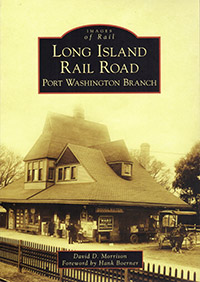
The Long Island Rail Road (LIRR) is the oldest railroad in the country still operating under its original name. It is the busiest railroad in North America, with 90 million annual riders on 735 trains covering 11 different branches. The Port Washington Branch carries 14 million riders annually and is the third-busiest branch on the LIRR, behind the Port Jefferson Branch (19 million riders) and the Babylon Branch (18 million riders). Port Washington Branch trains converge with the main line just east of Woodside Station. The branch has been electrified since 1913 and is double-track to a point just east of Great Neck Station. The highest bridge on the railroad is the Manhasset Viaduct, which goes over Manhasset Bay. The branch has serviced the 1939 New York World's Fair and the 1964 New York World's Fair as well as the stadium of the New York Mets baseball team. The Whitestone Branch, which was abandoned in 1932, diverted from the Port Washington Branch at a point a bit east of the current Mets-Willets Point station.
I contributed four photographs of the LIRR exhibits at the 1964-1965 New York World's Fair.
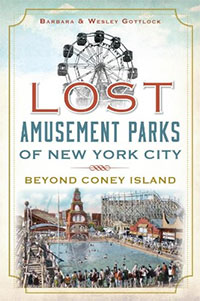
Coney Island is an iconic symbol of turn-of-the-century New York, but many other amusement parks thrilled the residents of the five boroughs. Strategically placed at the end of trolley lines, railways, public beaches and waterways, these playgrounds for rich and poor alike first appeared in 1767. From humble beginnings, they developed into huge sites like Fort George, Manhattan's massive amusement complex. Each park was influenced by the culture and eclectic tastes of its owners and patrons--from the wooden coasters at Staten Island's Midland Beach to beer gardens on Queens' North Beach and fireworks blasting from the Bronx's Starlight Park. However, as real estate became more valuable, these parks disappeared. Rediscover the thrills of the past from the lost amusement parks of New York City.
I supplied a photograph of Rockaways Playland.
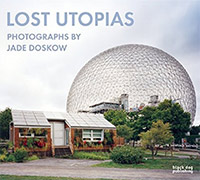
Since 2007, American photographer Jade Doskow has been documenting the remains of World’s Fair sites, once iconic global attractions that have often been repurposed for less noble aspirations or neglected and fallen into decay. Lost Utopias brings together the substantial body of work that Doskow has completed over the past decade, including iconic monuments such as the Seattle Space Needle, the Eiffel Tower, Brussels’ Palais des Expositions and New York’s Unisphere.
I contributed a photograph of the New York State Pavilion at the 1964-1965 New York World's Fair.
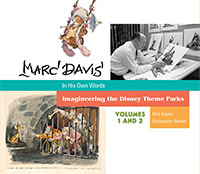
Award-winning filmmaker Pete Docter and veteran Walt Disney Imagineer Christopher Merritt share a deluxe two-book slip-cased set celebrating Disney Legend Marc Davis. The hefty volumes showcase Marc's mostly unseen Disney theme park concept art and offer a unique behind-the-scenes view as told through Marc's own words.
I contributed several photographs of the 1964-1965 New York World's Fair, Disneyland, and Walt Disney World.
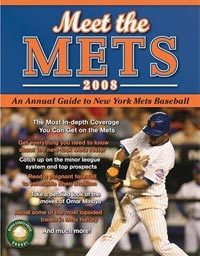
Meet the Mets 2008 is the most comprehensive and thorough guide to the 2008 Mets season available. Most preseason annuals cover all of baseball, and they never deliver enough team-specific information, but now there’s a publication that can quench the desire of any Mets diehard with a bevy of analysis, information, interviews, and nostalgia. A position-by-position breakdown of the 2008 roster will get fans quickly up to speed on the new-look Mets. Further, an in-depth analysis of GM Omar Minaya’s moves is included, as well as a look at some of the most lopsided trades in franchise history. The book also offers a poignant farewell to venerable Shea Stadium as the Mets look to move into new digs in 2009. A look back at great moments in Mets history is also included, including a twentieth anniversary remembrance of the 1988 division champions and how they just might have been better than the 1986 juggernaut. Moreover, Meet the Mets 2008 evaluates the entire organization, including an in-depth look at the farm system and top prospects.
I contributed a photo of Shea Stadium as it appeared just before opening day.
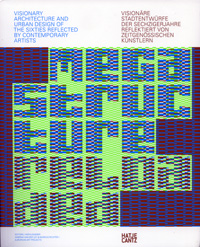
Fueled by a dissatisfaction with existing architectural solutions and an infusion of pop culture, art and rebellion, utopian urban proposals from the 1960s, such as Archigram's Plug-in City, Yona Friedman's La Ville Spatiale and New Babylon by former CoBrA painter, Constant, constitute a template for the concept of the megastructure-a city encased in one large structure or series of structures. Megastructure Reloaded posits the megastructure as a fix for contemporary urban architectural problems. The key figures of this resurgence--a group of architects and artists including Jose Davila, Simon Dybbroe Møller, Ryan Gander, Erik Goengrich, Franka Hörnschemeyer, Victor Nieuwenhuijs & Maartje Seyferth, Tobias Putrih, Tomas Saraceno, Katrin Sigurdardottir and Tilman Wendland--are detailed in this volume through texts and images. Soviet peripheral cities are discussed for their historical precedent and contextualized through ironic responses to them by radical architecture collectives such as Superstudio and Archizoom. The volume is rounded out with texts on Le Corbusier, Oscar Niemeyer, Lucio Costa and the planned cities of Chandigarh and Brasilia, as well as a theoretical section on megastructures and megacities. This volume is published in concert with an extensive European traveling exhibition and a series of symposia and workshops.
I contributed a photo of Expo 67 in Montreal.

The Miracle Has Landed celebrates the loveable Mets like no other book, complete with photos and artifacts of the time. A project of the Society for American Baseball Research, this volume gathers the collective efforts of more than thirty SABR members and features profiles of every player, coach, broadcaster, and significant front-office member connected to that great Mets squad. Included are Hall of Famers Tom Seaver and Nolan Ryan, beloved manager Gil Hodges, the talented outfield of Cleon Jones, Tommie Agee, and Ron Swoboda, drill sergeant backstop Jerry Grote, crucial mid-season acquisition Donn Clendenon, scrappy shortstop Bud Harrelson, and a pitching staff that went far deeper than just Seaver and Ryan. Forty years later the Miracle Mets are still revered, the first world champion expansion team and the club that stole New York's heart.
I contributed a picture of Shea Stadium taken shortly after it was built.

This book collected computer games written by me and other authors for "Creative Computing" magazine. The source code for each game was included so readers could input the games into their own computers. This edition included the games Chase and Road Race. Download the articles for a look at some vintage programming.
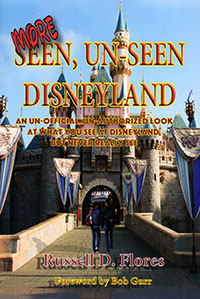
This book is the second volume of the Seen, Un-Seen series, covering more of the wonderful details at Disneyland that people look at every day, but really don't see. These details help make your experience at Disneyland more enjoyable and tell a more complete story. It is my hope that the book brings new enjoyment to experienced Park Guests, and encourages people who have not been to Disneyland to go. This book contains such topics as: Tributes to former attractions and Cast Members, Urban Legends, Landscaping, Names, Disneyland Railroad, Haunted Mansion, and many more... There are 268 pages, 597 pictures, 321 end notes, 16 quizzes, and over 165 references.
I supplied editorial suggestions and fact checked the text.
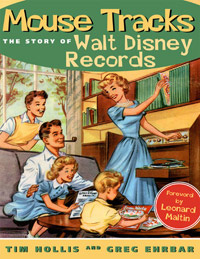
Long before synergy became a corporate watchword, Walt Disney parlayed his animated films into successful comic strips, toys, and phonograph records. Initially, the studio licensed music from the films to other companies, but after the TV show Disneyland spawned a hit in 1955 with "The Ballad of Davy Crockett," the company launched an in-house record outfit headed by noted big-band arranger Tutti Camarata. Besides soundtracks, read-along "Storyteller" LPs, and other children's releases, Disney lured Mary Martin and other adult-oriented singers and scored hits with such early '60s teen stars as Annette Funicello and Hayley Mills. Disney's labels cashed in on '70s fads with the double platinum Mickey Mouse Disco LP and the Mousercise workout album, rode into the CD era successfully, and now offer songs for download on iTunes. Hollis and Ehrbar obviously know and love Disney's music; what's more important is their thorough research. Besides detailed accounts of the diverse Disney releases, they provide sidebar biographies of dozens of performers. Though it lacks a discography, this is a valuable, highly readable addition to Disneyana.
I have a large collection of Disney records and catalogs, and provided information and fact checking assistance.
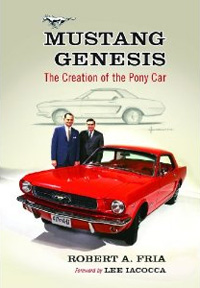
When Lee Iacoca brought his Fairlane Committee together in 1962 to explore the possibilities of a new kind of car for young, forward-thinking families, no one could have predicted quite how successful this car would eventually be. Finding a styling void in the swiftly growing baby boomer market, Ford hit a marketing bullseye with the Mustang--a four-seat, sporty "pony car" perfect for the times. In the first two years of its production, more than a million Mustangs were built--redefining the Ford brand and becoming the company's most popular car since the Model T. Based on extensive research and interviews with Mustang team members, including Lee Iacocca, management and factory employees, this book tells the fascinating story of how a clandestine group at Ford created one of the most iconic car designs in history.
I supplied pictures of the Ford Pavilion from the 1964-1965 New York World's Fair.
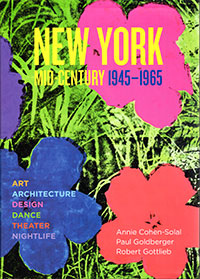
New York Mid-Century is the story of how the postwar Big Apple emerged as the cultural capital of the world. Annie Cohen-Solal brings alive the influential critics and patrons, the legendary galleries, and the artists themselves. Paul Goldberger presents the modernist architectural masterpieces that created the city’s sleek new profile, highlighting both public and private spaces. Robert Gottlieb invites us to relive the heyday of the musical, explore the great jazz clubs of Harlem, and peek into the inventive studios of the dance world. Richly illustrated with art, photographs, and ephemera, this volume is a stirring collection of a remarkably fertile period in the city’s history.
I supplied a picture of the 1964-1965 New York World's Fair.

In 1940, Walt Disney released his second feature film: Pinocchio, based on Carlo Collodi’s 1883 Italian children’s novel. The film was groundbreaking: it pioneered the latest animation and sound technology of the era, and established a blueprint for Disney filmmaking that remains intact today. It became the first animated feature to win a competitive Academy Award® (in fact, it won two), and earned a place on the roster of the National Film Registry. Pinocchio’s crucial role has endured decades, given its rare 100% rating on the film website Rotten Tomatoes and the lively discourse that continues to surround the film today.
I assisted with the research and fact checking.
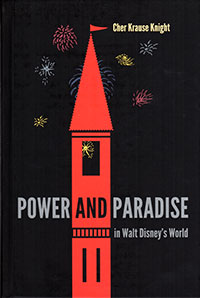
In this fascinating analysis, Cher Krause Knight peels back the actual and contextual layers of Walt Disney’s inspiration and vision for Disney World in central Florida, exploring the reasons why the resort has emerged as such a prominent sociocultural force.
Knight investigates every detail, from the scale and design of the buildings to the sidewalk infrastructure to which items could and could not be sold in the shops, discussing how each was carefully configured to shape the experience of every visitor. Expertly weaving themes of pilgrimage, paradise, fantasy, and urbanism, she delves into the unexpected nuances and contradictions of this elaborately conceived playland of the imagination.
I supplied a picture from the 1964-1965 New York World's Fair.
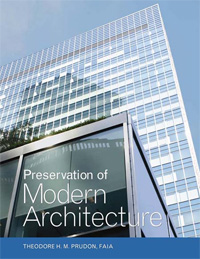
As today's valued examples of modern architecture age to the point that preservation is called for, the methods and technology used in such preservation must be carefully considered so that the design integrity of the building is maintained. Written by the president of an organization committed to the documentation and preservation of modern architecture, this book outlines best practices for undertaking such efforts and addresses the latest technological advances in the field. Containing relevant case studies of preservation projects in the United States and in Europe, this is the only professional reference for architects dedicated specifically to the subject of preserving modern architecture.
I supplied pictures from the 1964-1965 New York World's Fair.

The borough of Queens has seen many historical and geographical changes. Marshlands, woods and farms gave way to factories, thriving communities and the nation’s premier arterial highway system. Queens, the latest offering in Arcadia Publishing’s Then & Now series, by Jason D. Antos, a lifelong resident of Queens and the author of two other local history books about the borough, Whitestone and Shea Stadium, offers a rare look at New York City’s largest borough, featuring many photographs never published until now.
I supplied a picture from the 1964-1965 New York World's Fair.
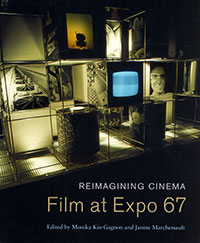
Expo 67, in its utopian aspirations, invited artists to create the world anew. What distinguished Montreal's exhibition from previous world fairs were its dramatic displays of film and media, transformed into urban and futuristic architectures. Reimagining Cinema explores the innovations that film and media artists offered Expo audiences and presents extensive visual material to reconstruct the viewer's experience. At the pinnacle of a new global humanism, cinema was expanded beyond the frame into total environments, multi-screens, multi-image and 360-degree immersion - experiments often seen as a harbinger of the digital age. Taking this expanded cinema as a starting point, the contributors focus on eight screen experiments, and employ innovative methodologies to reveal the intricacies and processes of production, while including factual descriptions, interpretive essays, interviews, and image dossiers. The book reflects how the Expo 67 film-events were encountered as creative experimentations that resonated with broader 1960s arts and culture, and as institutional collaborations with artists. More displays of photographic, cinematic, and telematic technology were experienced at Expo 67 than in any other previous world exposition. Reimagining Cinema captures the complexity and imaginative fervour of this exciting period in film history.
I contributed three photos to this in-depth look at the innovative films that were so popular at Expo 67.

The follow-up to his critically acclaimed book A-frame, Chad Randl's Revolving Architecture: A History of Buildings that Rotate, Swivel, and Pivot explores the history of this unique building type, investigating the cultural forces that have driven people to design and inhabit them. Revolving Architecture is packed with a variety of fantastic revolving structures such as a jail that kept inmates under a warden's constant surveillance, glamorous revolving restaurants, tuberculosis treatment wards, houses, theaters, and even a contemporary residential building whose full-floor apartments circle independently of each other. International examples from the late 1800s though the present demonstrate the variety and innovation of these dynamic structures.
I supplied pictures from the 1964-1965 New York World's Fair.
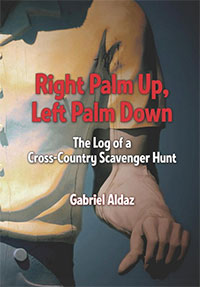
Part travelogue, part scavenger hunt, Right Palm Up, Left Palm Down: The Log of a Cross-Country Scavenger Hunt is a humorous account of one man's cross-country quest to unravel the mysteries surrounding a type of 20-foot-tall fiberglass statue popularly, though misleadingly, known as the Muffler Man. Who made them, and when? How many were made, and for what purpose? How many are still out there?
I supplied a picture and information on the Paul Bunyan statue at the 1964-1965 New York World's Fair.
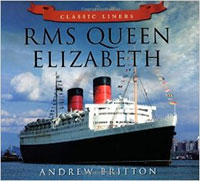
This history follows the RMS Queen Elizabeth, the second of two liners Cunard built for transatlantic service along with her running mate Queen Mary. She was launched in September 1938, the largest passenger liner built at the time and for many years after. Entering service as a troopship in World War II, she had a successful career before retiring in 1968 after which she was sold to a Hong Kong businessman with plans to convert her into a floating university. But it was not to be and she was capsized in a mysterious fire in the harbor in 1972, a bizarre end for an elegant liner. Andrew Britton presents a wealth of unpublished photographic material and ephemera, even including the original purchase receipt, to tell the story of this historic liner. This evocative book offers a treat for all ocean liner fans.
I supplied several pictures of this classic trans-Atlantic liner.
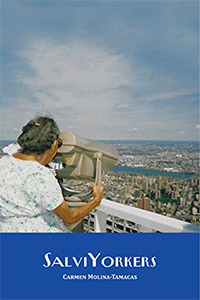
This book goes back ninety years and recounts a series of exploits by Salvadoran immigrants who have contributed art, solidarity, education, technology, creativity, hard work and sacrifice in the Big Apple and its suburbs. A starting point for new and future transnational generations to question where they come from and build positive bridges based on dialogue and understanding.
I supplied pictures of the Centralamerica and Panama pavilion at the 1964-1965 New York World's Fair.
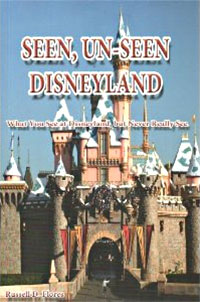
Seen, Un-Seen Disneyland documents and highlights the many obscure and unique details that are built within Walt Disney's Disneyland. With over 325 full-color images, Russell Flores brings to life—and to sight—the many wonders that Disney Imagineers have thoughtfully placed inside the Magic Kingdom. Stories, trivia, and over a dozen quizzes are part of this unique and first-of-its-kind book. Learn about things that visitors often see but not notice when visiting Disneyland. This book will make all subsequent visits to Disneyland that much more magical and inviting.
I supplied editorial suggestions and fact checked the text.
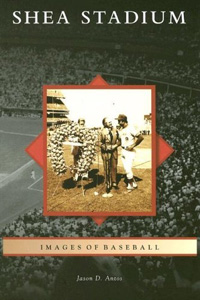
Rising among the factories and body shops off Roosevelt Avenue in Queens, Shea Stadium became the home of the New York Mets in 1964. Named after William A. Shea, the New York attorney responsible for bringing baseball back to the Big Apple after the departure of the Giants and the Dodgers, Shea Stadium has been the setting for many of the game’s greatest moments. Able to be converted from a baseball diamond into a football fi eld, the ballpark was home to the New York Jets from 1964 until 1983. From its opening in 1964 for the world’s fair to the unforgettable Beatles concert to the 1969 Miracle Mets, this book covers the history of Shea Stadium through its inception and up to the creation of the new modern-day Citi Field, which the Mets will call home in 2009.
I supplied pictures of the construction and early days of the stadium.
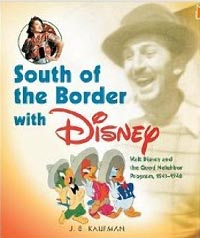
Millions of viewers have enjoyed Saludos Amigos and The Three Caballeros without realizing that these Disney films were produced for a specific diplomatic purpose: as part of an initiative to foster a spirit of friendly hemispheric unity by countering Nazi propaganda efforts in South America, so that all the Americas might stand together against the Axis powers. This effort, the Good Neighbor program, was initiated and guided by Nelson Rockefeller as head of the Coordinator of Inter-American Affairs (CIAA), a new government post created by President Roosevelt in 1940. Beginning with the extraordinary research trip Disney undertook in 1941, leading a team comprising his top animators, artists, and writers from Mexico to Chile, renowned animation historian J. B. Kaufman reveals the story behind Disney's contribution to Rockefeller's program. Based on extraordinarily comprehensive archival research and richly illustrated with many images never before published, South of the Border with Disney is a fascinating study of an all-but-forgotten aspect of the American war effort that will inform and delight Disney fans, animation lovers, and World War II buffs everywhere.
I contributed video tapes and other reference material.
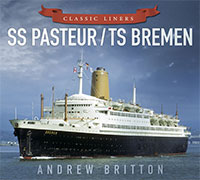
TS Bremen was one of the most popular liners operating across the Atlantic. Built for the French as the SS Pasteur, she made a dramatic escape in 1940 carrying 200 tons of French gold bullion reserves to Halifax, Nova Scotia. Requisitioned by the British under Cunard, she became a hospital troopship, carrying 300,000 Allied troops around the world, with a major role in supplying the Battle of El Alamein. Charles de Gaulle claimed that the Pasteur’s contribution "significantly helped bring . . . Hitler to his ultimate end." Post-war she remained in French military service until 1956, conveying French troops to Vietnam, Algeria, and the Suez Crisis. Following lay-up, she was sold to the North German Lloyd Line as their final flagship, refitted and renamed Bremen. The sale sparked violent protests in France, but she was now the pride of the German nation and began her next career. The book contains many previously unpublished images, including spectacular color views of the liner in transatlantic cruising service and her dramatic sinking on her final voyage for demolition in Taiwan in 1974.
I supplied photographs of the Bremen in New York.
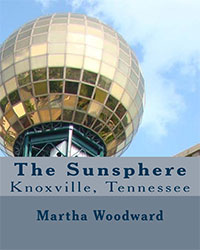
Knoxville's Sunsphere is the iconic tower built as the theme structure for the 1982 World's Fair held in Knoxville, Tennessee. This new book is the author's second editiion containing the history and happenings in one of the South's most famous buildings. It is an excellent source of study for historians and students of all ages.
I supplied several photographs of the Sunsphere and the park built after the Fair closed.
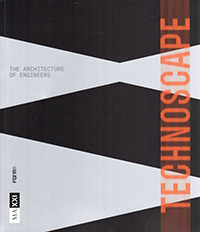
Catalogue of the TECHNOSCAPE exhibition, held at MAXXI in Autumn 2022, focusing on the relationship between artistic and scientific disciplines, nowadays closer than ever, and the consequent contacts between technique, creativity and social awareness.
Architecture, engineering and science have overlapped on numerous occasions during the 20th century. First in the heroic phase and then in the mature phase of the reinforced concrete, then with the affirmation of hi-tech construction methods in the 1970s and 1980s and finally with the eruption of digitally controlled technologies.
TECHNOSCAPE explores this alliance, responding to MAXXI’s mission to look towards the future of our planet and the disciplines that modify its spaces.
The volume follows the dual register of the exhibition, first dealing with how technology is making architecture, urban planning and other related disciplines more aware of their technical and scientific responsibility and capable of opening up new lines of research. The focus shifts then to structural engineering, comparing current masterpieces with previous historical modernist examples.
I supplied two photographs from Expo '70.
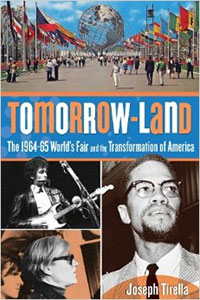
Motivated by potentially turning Flushing Meadows, literally a land of refuse, into his greatest public park, Robert Moses--New York's "Master Builder"--brought the World’s Fair to the Big Apple for 1964 and ’65. Though considered a financial failure, the 1964-65 World’s Fair was a Sixties flashpoint in areas from politics to pop culture, technology to urban planning, and civil rights to violent crime.
In an epic narrative, Tomorrow-Land shows the astonishing pivots taken by New York City, America, and the world during the Fair. It fetched Disney’s empire from California and Michelangelo’s La Pieta from Europe; and displayed flickers of innovation from Ford, GM, and NASA--from undersea and outerspace colonies to personal computers. It housed the controversial work of Warhol (until Governor Rockefeller had it removed); and lured Ken Kesey and the Merry Pranksters. Meanwhile, the Fair--and its house band, Guy Lombardo and his Royal Canadians--sat in the musical shadows of the Beatles and Bob Dylan, who changed rock-and-roll right there in Queens. And as Southern civil rights efforts turned deadly, and violent protests also occurred in and around the Fair, Harlem-based Malcolm X predicted a frightening future of inner-city racial conflict.
I supplied pictures of the 1964-1965 New York World's Fair and am quoted in the book.
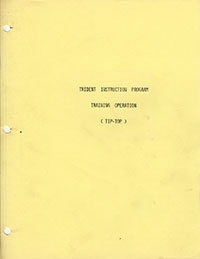
Back as a brand new engineer supporting the U.S. Navy's Fleet Ballistic Missile submarines I was asked to help develop a training program that would teach the older engineers who had been working on analog computers something abut the newer digital systems. This book covered everything, and I mean everything, they had to know. It has to be a good two inches thick of the dullest and driest material I have ever read. Going through it now makes wonder how I could have forgotten so much of it by now and if I really needed to know it then. Subjects like "3 Bit Ripple Counter With Decoded Output" - wow. The project had a catchy code name, Project TIP-TOP. We had to come up with a name that would produce an acronym that would look good printed on the book spines. It seems someone goofed the first time around and there are hundreds of binders out in a landfill with the acronym for the first name, the Trident Instructional Training System...

Former Cosmopolitan executive editor Mauro tries to underscore the irony of the 1939–1940 New York World's Fair, with its theme of world unity, opening on the brink of world war. But Mauro has multiple narratives, moving erratically between the evolution of the fair, with its slogan Building the World of Tomorrow; war brewing in Europe; and Germany gobbling up territory (Hitler refused the invitation to have a pavilion at the fair). As, one by one, European nations closed their pavilions, due to the war, the fair's theme rang increasingly hollow. During the fair's run, Einstein famously wrote to President Roosevelt expressing concern over Germany's stockpiling of uranium, giving rise to the Manhattan Project. To this unwieldy narrative Mauro adds the story of two NYPD bomb squad detectives killed when a bomb detonated on the fairgrounds on July 4, 1940.
I supplied pictures of the 1939-1940 New York World's Fair.

Full of little-known facts about the 26 adventures of SHADO, continuity errors, links to other Anderson productions, a look at the ISOSHADO archive and much more.
Gerry Anderson's science fiction series "UFO" has long been one of my favorite shows, and I was thrilled to be asked to contribute to this 64-page booklet produced by Fanderson, the official fan club for Gerry Anderson and all of his series. I wrote several of the episode descriptions and helped with proof-reading and fact-checking on the rest of the booklet. It can be ordered from Fanderson at https://fanderson.org.uk/shop/ufo-close-up/ but you do need to be a Fanderson member.
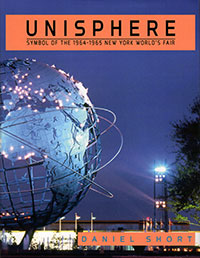
The theme center of the 1964-1965 World’s Fair ‘Unisphere’ was installed April 1963 in Flushing Meadows Park, Queens, New York. Unisphere was preliminarily designed by architect Gilmore Clarke with a developed structural engineering design by industrial designers at Peter Muller-Munk Associates and engineers at American Bridge Company. The 140 feet high, 900,000 pound stainless steel behemoth is one of the largest representations of Earth on the Earth. Unisphere has stood for fifty years as both a representation of the dawn of the space age, and as a lasting relic of one of the greatest of the World’s Fairs. - lulu.com
I supplied pictures and editorial assistance. I highly recommend this book to World's Fair fans.
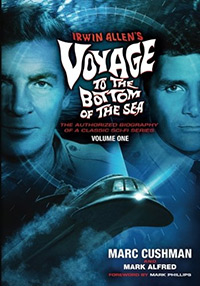
Irwin Allen’s Voyage to the Bottom of the Sea, Volume One documents the creation and production of the most challenging TV series up to its time. Voyage was distinctive due to its recurring cast, special-effects-driven action, futuristic sets, and expensive miniature photography. The show elevated the TV science-fiction genre and demonstrated what could be accomplished on a TV budget, within a tight production schedule, while appealing to a mass audience. Voyage to the Bottom of the Sea set the stage for the success of Allen’s Lost in Space and The Time Tunnel, as well as Gene Roddenberry’s Star Trek. Here also is the rags-to-riches story of Irwin Allen, from his tenement upbringing in the Bronx to his later incarnations in Hollywood. Allen was an entertainment journalist, radio and television host, and literary agent – all before becoming a successful Academy Award-winning motion-picture producer and director. Irwin Allen’s Voyage to the Bottom of the Sea, Volume One makes you a witness in the production offices, writers’ conferences, and on the soundstages. You’ll become immersed in the making of the Voyage to the Bottom of the Sea 1961 feature film and 1964-68 television series. Included are hundreds of memos among Allen, his staff, and the network; production schedules; budgets; TV ratings; and more than 300 photos, many never shared with the public before.
I supplied reference materials and editorial assistance. A great book for fans of the Seaview and crew.
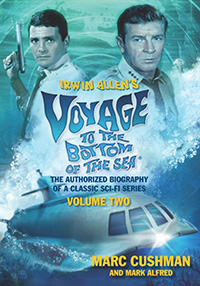
Irwin Allen’s Voyage to the Bottom of the Sea, Volume Two: The Authorized Biography of a Classic Sci-Fi Series, from Jacobs/Brown Press, completes the two-book set by Marc Cushman and Mark Alfred, documenting the production and cultural impact of this iconic, beloved and pioneering science-fiction series. Voyage to the Bottom of the Sea, which aired on ABC-TV from 1964 through 1968, was the first hour-long, color, science-fiction series on television. Its success proved to the networks that such a show could be managed on a TV budget and shooting schedule, and attract a mass audience. Without Voyage, there would have been no Lost in Space or Star Trek. CBS and NBC, respectively, only decided to gamble on those series after Voyage had won its time slot. Therefore, it was Irwin Allen who had boldly gone where no man (or television producer) had gone before! Now, with Volume 2 and the previous volume as your guides, you can journey back in time to witness the making of this legendary series. Here you’ll find the production memos between Irwin Allen, his staff, and the ABC-TV network; the shooting schedules and production dates; the budgets; the ratings; the reviews and articles from that era; new and exclusive interviews, as well as archival interviews; and several hundred pictures, many never before shared with the public. And you’ll find out what made Irwin Allen tick! With an introduction by David Hedison, Volume 2 covers the making of Seasons 2, 3 and 4 – all 78 color episodes! Your deep dive into Voyage to the Bottom of the Sea is here.
I supplied reference materials and editorial assistance. It was great fun to visit the SSRN Seaview one more time.

Travel with me to visit and learn about the former Fort Wilderness Railroad. This unique steam railroad traveled the Walt Disney World campground resort back in the 1970's. The first half of the book covers reasons why Walt Disney loved railroading followed by the history and people of the railroad and Fort Wilderness. The second half covers the track plans and the engineering behind the railroad.
I supplied reference material and a photograph.
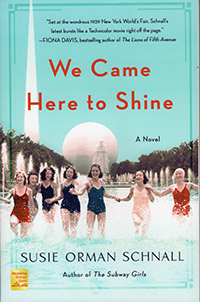
Set at the iconic 1939 New York World’s Fair, Susie Orman Schnall's "We Came Here to Shine" is historical fiction featuring two bold and ambitious women who navigate a world of possibility and find out what they're truly made of during a glorious summer of spectacle and potential.
I supplied several atmosphere photos and reference material from the 1939-1940 New York World's Fair.
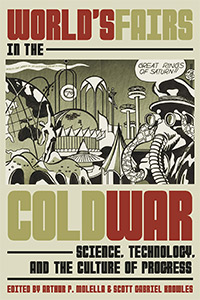
The post–World War II science-based technological revolution inevitably found its way into almost all international expositions with displays on atomic energy, space exploration, transportation, communications, and computers. Major advancements in Cold War science and technology helped to shape new visions of utopian futures, the stock-in-trade of world’s fairs. From the 1940s to the 1980s, expositions in the United States and around the world, from Brussels to Osaka to Brisbane, mirrored Cold War culture in a variety of ways, and also played an active role in shaping it. This volume illustrates the cultural change and strain spurred by the Cold War, a disruptive period of scientific and technological progress that ignited growing concern over the impact of such progress on the environment and humanistic and spiritual values. Through the lens of world’s fairs, contributors across disciplines offer an integrated exploration of the US–USSR rivalry from a global perspective and in the context of broader social and cultural phenomena—faith and religion, gender and family relations, urbanization and urban planning, fashion, modernization, and national identity—all of which were fundamentally reshaped by tensions and anxieties of the Atomic Age.
I supplied reference material and photographs.





